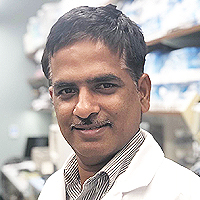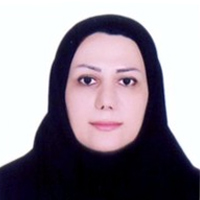TMD and pregnancy?
Published on: 14th March, 2018
OCLC Number/Unique Identifier: 7877876040
Pregnancy is a happy stage in life of every woman, but at the same time it is a rather difficult period, since pregnancy represents a serious strain on the body. In the body of a woman during this period there are significant physiological changes that ensure the correct development of the fetus, prepare the body for the upcoming delivery. In this difficult period, the burden on all organs and systems of the woman’s body is significantly increased. Especially often suffer joints; there is a risk of permanent pain, the development of diseases or exacerbation of existing diseases. One of the most common problems is Temporomandibular Dysfunction or Disorder (TMD) which many women face, but still hasn’t been explained.
Macitentan in Adults with Sickle Cell Disease and Pulmonary Hypertension: A Proof-of-Concept Study
Published on: 22nd April, 2024
Pulmonary hypertension (PH) in sickle cell disease (SCD) is associated with a mortality rate of 37%. There is an upregulation of adhesion molecules which leads to the expression of endothelin-1, a potent vasoconstrictor. A prospective, descriptive study was done to determine the safety and efficacy of macitentan in patients with SCD and PH. Continuous variables were reported as mean ± SEM or percentage where appropriate. We screened 13 patients and recruited five. All five patients were adults. Data were analyzed as appropriate by student t - test. Statistical significance was assumed at p < 0.05. Baseline pulmonary hemodynamics obtained by right heart catheterization and systemic hemodynamics were (± SEM): mean pulmonary artery pressure (MPAP) 32 ± 8 mmHg, right atrial pressure (RAP) 9 ± 4 mmHg, pulmonary vascular resistance (PVR) 257 dynes-sec/cm5 and CI 3·7 ± 0.39 l/m2. Of all parameters, only PVR and 6-min walk distance changed significantly. For the group, MPAP decreased by 15.6%, PVR by 22.5% and RAP by 25.5%. The 6-minute walk distance increased over sixteen weeks except in Patient 4 who had a 3% decrease. The mean walk distance increased in the total distance, from 464 ± 158 meters to 477 ± 190 meters (p .123). In four patients, the adverse events were mild to moderate and did not lead to study drug discontinuation. Significant improvement in pulmonary hemodynamics and exercise capacity in patients with SCD-related pulmonary arterial hypertension. We found that macitentan was safe and well tolerated.
Metabolic profiling and antibacterial activity of Eryngium pristis Cham. & Schltdl. - prospecting for its use in the treatment of bacterial infections
Published on: 3rd November, 2021
OCLC Number/Unique Identifier: 9331573236
Morbidity and mortality of the infected patients by multidrug-resistant bacteria have increased, emphasizing the urgency of fight for the discovery of new innovative antibiotics. In this sense, natural products emerge as valuable sources of bioactive compounds. Among the biodiversity, Eryngium pristis Cham. & Schltdl. (Apiaceae Lindl.) is traditionally used to treat thrush and ulcers of throat and mouth, as diuretic and emmenagogue, but scarcely known as an antimicrobial agent. With this context in mind, the goals of this study were to investigate the metabolic profile and the antibacterial activity of ethanolic extract (EE-Ep) and hexane (HF-Ep), dichloromethane (DF-Ep), ethyl acetate (EAF-Ep) and butanol (BF-Ep) fractions from E. pristis leaves. Gas Chromatography-Mass Spectrometry (GC-MS) was performed to stablish the metabolic profile and revealed the presence of 12 and 14 compounds in EAF-Ep and HF-Ep, respectively. β-selinene, spathulenol, globulol, 2-methoxy-4-vinylphenol, α-amyrin, β-amyrin, and lupeol derivative were some of phytochemicals identified. The antibacterial activity was determined by Minimal Inhibitory Concentration (MIC) using the broth micro-dilution against eight ATCC® and five methicillin-resistant Staphylococcus aureus (MRSA) clinical strains. HF-Ep was the most effective (MIC ≤ 5,000 µg/µL), being active against the largest part of tested Gram-positive and Gram-negative bacterial strains, including MRSA, with exception of Escherichia coli (ATCC 25922) and Pseudomonas aeruginosa (ATCC 9027) and (ATCC 27853). These results suggest that E. pristis is a natural source of bioactive compounds for the search of new antibiotics which can be an interesting therapeutic approach to recover patients mainly infected by MRSA strains.
Vaginal cervicoisthmic cerclage for cervical incompetence in pregnant women: Fernandez’s technique in 8 steps
Published on: 12th November, 2021
OCLC Number/Unique Identifier: 9359442692
Video objective: To demonstrate that surgical technique of vaginal cervicoisthmic cerclage must be performed in women with history of cervical incompetence with more than two late miscarriages before 24 weeks or premature deliveries before 28 weeks and after prior failure of preventive Mc Donald cerclage. In this video, the authors describe the complete procedure in 8 steps to standardize and facilitate the procedure in a simple and safe way during pregnancy. Design: Step-by-step video demonstration of the surgical technique.Setting: Tertiary Center for University Hospital.
Imaging aspect of neuromyelitis optica: a case report and review of the literature
Published on: 7th December, 2021
OCLC Number/Unique Identifier: 9359560505
The case report presents a neuromyelitis optica in a 19 years old male. Brain and spinal cord MRI showed bilateral optic neuropathy, multiphasic demyelinating process involving the cervical and thoracic spinal cord. Cerebrospinal fluid showed negative NMO Ig G. We will describe the radiological aspect of neuromyelitis optica with a review of the literature.
Bleeding complications at the access sites during catheter directed thrombolysis for acute limb ischaemia: Mini review
Published on: 3rd March, 2021
OCLC Number/Unique Identifier: 8941332867
Acute and subacute ischemia of the lower limbs represents a major emergency with a high in-hospital mortality, complication, and leg amputation rates.
Treatment options for acute limb ischemia include systemic anticoagulation, followed by various catheter based options including infusion of fibrinolytic agents (pharmacological thrombolysis), pharmacomechanical thrombolysis, catheter-mediated thrombus aspiration, mechanical thrombectomy, and any combination of the above or open surgical intervention (thromboembolectomy or surgical bypass).
Minor and major bleeding complication during catheter directed thrombolysis (CDT) especially at access site are frequent. Bleeding complications require often an interruption or termination of CDT affecting clinical outcome of the patients. Recently we examined a new access site bleeding protection device during CDT.
Severe hypertriglycerdemia in pregnancy
Published on: 12th February, 2021
OCLC Number/Unique Identifier: 8932530930
31 year old female presented with abdominal pain and respiratory distress in the third trimester of her second pregnancy. Her blood workup revealed a lipemic sample (Figure 1) due to markedly elevated serum triglycerides of 8178 mg/dl (Glycerol Phosphate Oxidase method). Total cholesterol and Low Density Lipoprotein were elevated at 1701 mg/dl and 788 mg/dl respectively. There was no family history of lipid disorders. Diagnosis was consistent with gestational hypertriglyceridemia with acute pancreatitis (Serum Amylase-50 U/L, Serum Lipase- 96 U/L), though genetic tests to rule out pre-existing primary hypertriglyceridemia was not feasible. In view of the life threatening condition, she was initiated on Insulin-Dextrose infusion and offered one session of Plasma Exchange. Figures 2,3 depict membrane plasma separation with the obtained effluent as lipemic plasma. Her serum triglycerides showed a declining trend and was discharged in good health (serum triglycerides at discharge-651 mg/dl).
A new mandibular anchoring technique
Published on: 27th September, 2022
Posterior anchorage in the mandible has always been difficult to obtain during our orthodontic treatments. We tried a large number of screw anchors and plate systems which gave us quite acceptable clinical results but had many drawbacks.
Shoulder recovery for head and neck cancer patients after unilateral neck dissection: a pilot exploratory study
Published on: 28th September, 2022
An established side-effect of neck dissection (ND) for head and neck (HNC) tumour management includes shoulder dysfunction (SD), which can impact quality of life (QOL). Shoulder strength and range of movement (ROM) are key parameters to be monitored in SD. However, such evaluations are not routinely conducted in the clinical setting. The aim of this study was to evaluate objectively the impact of ND on shoulder functions. Methods: This is a pilot exploratory study in a tertiary cancer centre. Five participants with unilateral ND and advanced HNC, completed the study. Outcome measures consisted of self-reported QOL questionnaires, C2–T1 dermatomes and shoulder ROM and strength testing. Data was collected at baseline, 1.5-months after surgery and 6-months after diagnosis (after adjuvant treatment completion). Results: Most outcome measures on the surgically affected side were negatively impacted post-operatively, with varied recovery seen at follow-up. Sensory loss was noted at C3–4 dermatome levels. Shoulder ROM and strength was reduced on the surficial side for all participants, with some recovery after six months except for two participants.Conclusion: Results of SD after ND are diverse and unique to each patient. Findings from this pilot study indicate that regular rehabilitation/exercise may facilitate recovery of shoulder function post HNC surgery. However, customised rehabilitation may yield better outcomes. Future studies with a larger sample are indicated to validate the findings of this study.
Acceptance of Oral Sex among High School Students in Budapest: Incidence and Correlates
Published on: 4th December, 2023
Introduction: Adolescents and young adults often engage in oral sex. However, the factors affecting the development of agreeing with oral sex are not clear enough.Objective: We aimed to assess the degree of agreement with oral sex among high school students and to search for background factors affecting this.Material and method: We conducted a quantitative cross-sectional study among 157 females and 38 male high school students over the age of eighteen by using an anonymous, paper-based, multiple-choice, self-administered questionnaire. For statistical analysis, we used descriptive statistics, two-sample t-tests, and Spearman rank correlation. Results: Of the respondents 67.9% were sexually active and 31.6% of them had more than one sexual partner. Of males 97.1% and of females 84.9% agreed with accepting oral sex. Degree of agreement with oral sex was higher in those who had had partnered sexual experience, and in those females who more frequently met close friends outside of school. Most participants were not in a current relationship with a partner, and for those who were, its duration did not affect the degree of accepting oral sex. The degree of agreement with the proficiency in male sexuality, and the degree of agreement with those dimensions of sexuality that most expressed the sexual drive and the desire to gratify it with the partner showed the strongest positive correlation with the degree of agreement with oral sex. In addition, the degree of agreement with the items of expressing sexual openness showed correlations with the degree of accepting oral sex. Conclusion: The degree of agreement with oral sex is high among high school students. Among the factors influencing this, the intensity of meeting friends seems to be important. We therefore recommend that the schools improve sex education in groups, highlighting the risks of oral sex, to reach the target individuals and their friends as well as their potential partners.




